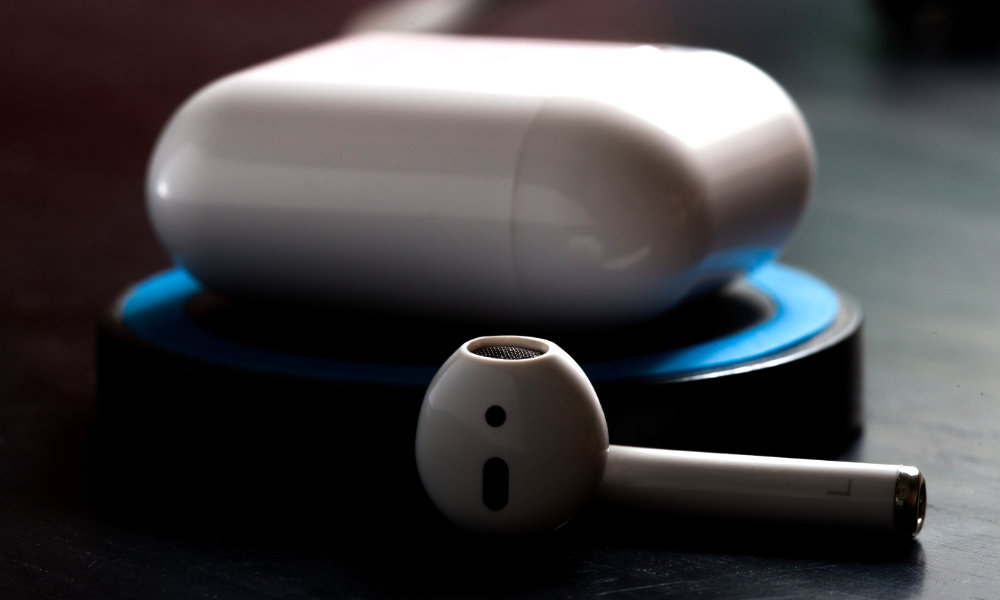Having Problems Charging Your AirPods? Try These Fixes
 Credit: AhmedAdel / Shutterstock
Credit: AhmedAdel / Shutterstock
Toggle Dark Mode
Last year Apple introduced two new versions of its popular truly wireless earbuds — the second-generation AirPods, and later on the AirPods Pro — adding support for Qi wireless charging for both versions via a wireless charging case.
For the second-generation AirPods, the case was optional, and in fact it was also sold separately, allowing users of first-generation AirPods to also take advantage of wireless charging capabilities, while the AirPods Pro included it as a standard feature. While users previously had to plug AirPods into a Lightning cable to charge them up, the new wireless charging case would let you drop them on just about any Qi-compatible charger whenever you needed to add a bit of extra juice.
Of course, with the wireless battery case providing 24 hours of additional power, it’s not like most users need to charge them every night, but when you do, wireless charging can be much handier than fishing for a cable. Unfortunately, despite the promise of Qi compatibility, many users have found themselves facing more challenges getting the AirPods to charge properly than they should, considering how easy wireless charging is supposed to be.
We’ve experienced this ourselves with several wireless chargers, which often refuse to charge the AirPods. Those that offer a visual indicator will sometimes display a flashing LED, while others simply don’t transmit power, leaving the user with no indication that the AirPods actually aren’t being charged until they pick them up and check their battery status via their iPhone.
Upon further investigation, we’ve discovered that in most cases this problem is being caused by a core safety feature that exists on wireless chargers, but the good news is that if you’re experiencing this problem, there are some ways you can probably work around it.
Foreign Object Detection
Any QI-certified wireless charger is required to support a feature known as Foreign Object Detection, which prevents the device from transmitting wireless charging power when a metallic object, like a coin or a set or car keys, is placed on the pad, or even when a metallic object is detected in between the pad and a legitimate Qi-compatible device like an iPhone.
This safety feature is necessary because the inductive charging current sent out by the pad can actually cause metallic objects to heat up to temperatures that can easily exceed 100° C (~212°F), which can not only burn your fingers if you try and pick them up again, but can damage the charging pad too.
So when Foreign Object Detection kicks in, any proper Qi charging pad will simply refuse to transmit any power at all in order to protect the pad and its owner. Some pads will indicate this with their LED status light, but regardless of whether an indicator is provided, the Wireless Power Consortium requires that all Qi-certified pads turn off charging power when a metal object is detected.
The Problem with AirPods
Unfortunately, it appears that the metallic hinge on the AirPods wireless charging cases is enough to trigger the Foreign Object Detection safety feature in at least some wireless charging pads, cutting off charging power to the AirPods.
The problem seems to be limited to only certain charging pads which are presumably more sensitive to foreign objects. For example, Mophie’s Charge Stream Pad+ lineup seems to be affected, including its Charge Stream Mini (which is otherwise ideally suited for the AirPods), while oddly its older 7.5-watt Wireless Charge Pad that was originally released in partnership with Apple doesn’t show the same problem.
So it’s going to be hit and miss as to whether your charging pad is impacted, but we’ve seen enough that don’t charge the AirPods properly to say that it’s definitely something you should check. This is especially the case if your charging pad doesn’t have an LED light to indicate when the foreign object detection feature kicks in, since you may otherwise think that your AirPods are charging normally, even when they aren’t.
What You Can Do About It
If you have a charging pad that’s affected by this problem, however, you don’t necessarily need to run out and replace it, as there are a few things you can do to work around the problem.
One thing that often helps, especially on larger circular pads like Mophie’s, is to position the AirPods case slightly off-centre, basically ensuring that the metallic hinge is more toward the edge of the pad. As long as your charger has a status LED, you’ll know within a second or two if you got the position right, and after a while it will just become a habit to put the AirPods on the pad this way. Unfortunately, if your pad doesn’t have a status LED, this may be harder to do reliably, leaving you in the blind as to whether your AirPods are actually charging properly or not.
Another option is to pick up a case for your AirPods. Numerous users have reported (and we’ve confirmed) that the additional few millimetres added by a case is often enough to avoid triggering the foreign object detection feature, resulting in reliable charging. In fact, even if you don’t want to pick up a case, placing even a few pieces of small paper or a cloth on top of your charging pad and then placing the AirPods on top of that will often be enough to prevent the pad detecting the metallic hinge as a foreign object.
In either case, however, you can always confirm that your AirPods are charging properly by either checking the status LED, if one exists, or by confirming the charge level with your iPhone after a few minutes of charging.







